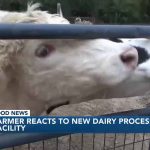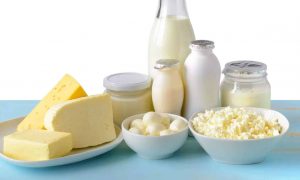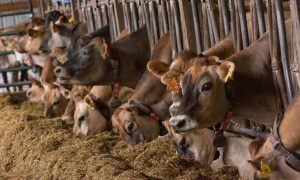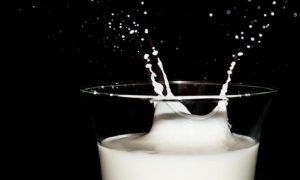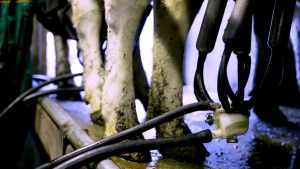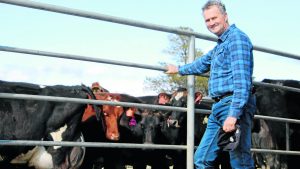
Cows produce more milk because of three main factors: their feed, their environment and how comfortable they are. Fortunately, Michigan farms excel in all three, according to Michigan State University animal science professor Adam Lock.
Jolene Griffin, the vice president of industry relations at United Dairy Industry of Michigan, said that diet planning is a specialty in the state.
“We want our cows to have all of the nutrients that they need — they rely on us for food,” she said. “You and I might meal prep for a weekend or a couple of days, but as dairy farmers, we’re meal prepping for an entire year for our cows.”
“For lunch, I had two packages of little M&Ms — I don’t have anybody making a balanced diet for me, but we have to for our cows,” Griffin added.
Dairy cows on average eat around 100 pounds of food per day.
Through the abundance of dairy research in the state, experts have found that cows can eat things like corn silage, cottonseed and sugar beet pulp because they are ruminants.
They have multiple stomachs that can ferment feed before digestion, making them able to consume nutrients from foods that humans can’t consume.
“Cows are metabolic marvels,” Griffin said.
That’s why farms are able to stay sustainable and efficient by using all parts of certain plant-based food — so there is no waste, she said.
Sustainability of the land also has a lot to do with the health of the state’s cows.
Lock said, “Michigan has an abundance of freshwater access, which is good for the nutrients of the cows.”
“But I think that the progressive nature of our industry and our producers in the state is what allows them to pick up the latest ideas or technologies,” Lock added.
Agriculture is the state’s second-biggest industry, with the dairy industry leading that category. There are over 900 dairy farms in the state. Within the past 20 years, the number of cows in the state has grown by 14%.
The most are in the Thumb area — topped by Huron County with 48,500 dairy cows.
Among the other top 10 leaders are Clinton County with 31,500 cows, Allegan County with 24,000, Gratiot County with 23,000 and Ionia County with 18,400.
This year there are around 432,000 milk cows in the state, according to the U.S. Department of Agriculture.
Agriculture is the state’s second-biggest industry, with the dairy industry leading that category. There are over 900 dairy farms in the state. Within the past 20 years, the number of cows in the state has grown by 14%.
The most are in the Thumb area — topped by Huron County with 48,500 dairy cows.
Among the other top 10 leaders are Clinton County with 31,500 cows, Allegan County with 24,000, Gratiot County with 23,000 and Ionia County with 18,400.
This year there are around 432,000 milk cows in the state, according to the U.S. Department of Agriculture.
Lock highlighted the importance of research.
“There’s no point in us doing something if it just stays within the university. It has to be applied and utilized on farmland,” he said.
“For 100 years now, we’ve had continual advancements in our understanding of animal sciences, nutrition, milk production and reproduction — they all come together,” Lock added.
And Griffin said, “My parents and my brother don’t farm the same way that my great-grandparents farmed because we have better technology, we have better equipment and we have better ways of knowing how to take care of our calves.”

